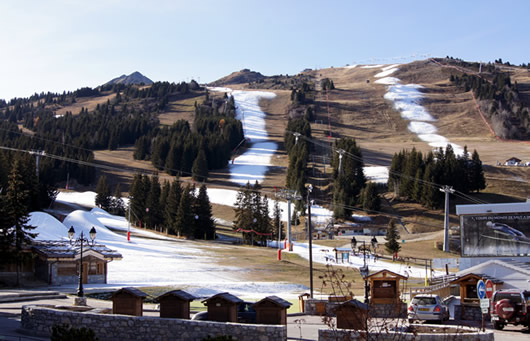Does this email look weird(er than normal) to you? It's also available to view at www.courchevelenquirer.com/newsletter/20112011.html |
|
|
20/11/2011 Issue 65 |
|
 |
|
I dont remember when but I remember Jeremy Clarkson made a rather interesting statement about the price of oil. Instead of complaining about the oil price he commented about the logistics of getting the oil out of the ground, shipping it half way around the world, refining it and delivering it to a station near you home for less than the price of a pint of beer. Or maybe the fact you can go to the post office and put 40p on a piece of stationary and some guy name John will deliver it the next day on the other side of the country. Considering most people dont think about the whole logistics rigmarole they just lick a stamp / stick a pump into their car and then whinge about the amount of tax they have to pay. The same thing could be said of snow cannons. People see them dotted around the mountain, hear them working at night take the whole snow coverage thing for granted. First of all the science bit : Snow comes from water vapor in the atmosphere. It cools to the point that it condenses, changing from a gas into a liquid or solid. The droplets in a cloud are so light that the air in the atmosphere keeps them aloft. When the droplets get too heavy, they fall in the form of precipitation. If it is cold enough, this water vapor condense as tiny ice crystals. Thanks to bits of dirt, bacteria and other material floating around in the atmosphere (nucleators) moisture in a cloud freezes around 0 C. The nucleators attract water molecules, which reduces their energy to the point that they form ice crystals. Water condenses onto the nucleator, which becomes the nucleus, the center, of the snow crystal. As the snow crystal moves around the cloud, more water particles condense onto it and freeze into crystals. The collection of individual crystals forms a snow flake. As the snow flake grows heavier, it falls toward the earth. If it is cold enough the whole way down, the flake will still be frozen when it reaches the surface. To replicate this the traditional type of snow cannon combines cooled water and compressed air. The snow cannons are hooked up to two pipes. One pumps in water from the reservoir and the other pumps in high-pressure air from an air compressor. The compressed air atomizes the water spliting it into many tiny droplets, blowing the water droplets into the air, helping it cool the water droplets as they fly into the air. When air is compressed, the different air particles are pushed tightly together, which means they don't move around as much. When the air is released, the particles spread out and move more freely. This means the particles are using more energy, absorbing heat from the area around them and thus cooling the air around the water droplets. So how do snow-makers determine if the temperature conditions are right? It turns out they need a lot more information than they can get from an ordinary thermometer. Standard thermometers measure the dry bulb temperature of the atmosphere; but the most important factor for snow conditions is the wet bulb temperature. This is a function of the dry bulb temperature and the relative humidity. Basically water cools more slowly when the humidity is high, and more quickly when the humidity is low. If the temperature is around -1 C, you need relative humidity to be less than 30 percent for good snow-making conditions. If the temperature is less than -6.7 C, you can make snow fairly easily even if the relative humidity is 100 percent. Then there is the water. To cover several pistes with manmade snow it takes about 285,000 litres of water to create a 15cm blanket of snow covering a 61x61 meters. The system in a good-sized ski slope can convert 19,000 to 38,000 litres of water to snow every minute! So there you have it. Kilometres of water and compress air pipes snaking around the mountain, massive bodies of water, loads of energy to run the compressors, all so the Verdons piste can open on the 3rd December regardless whether it snows or not. The editor |
|
Forget keeping calm and carrying on in the alps you need to Apres Ski and get walloped. Available in Red, Navy Blue and a few in Green they are available. |
|
Useful links:
|
|
| It is never our intention to send unwanted e-mail. If you no longer wish to receive this newsletter, simply reply to this email and place unsubscribe in the header |
|